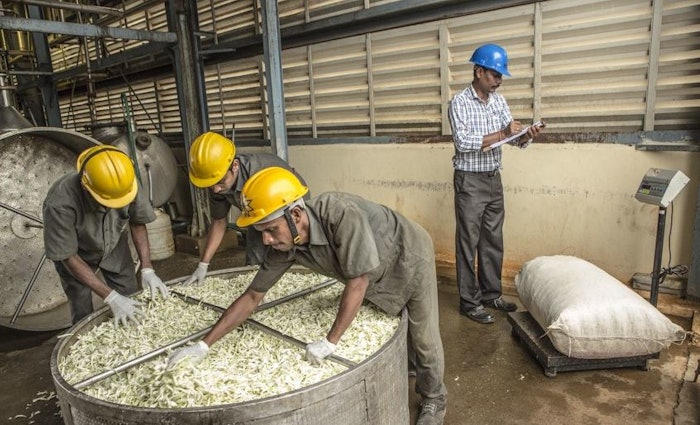
Sustainability continues to be a major initiative for F&F companies across categories and production. Over the last few years, headlines have seen a shift in formulation, sourcing and evaluating emissions. One of which is LMR Naturals by IFF, which has been documenting active steps to develop an innovative and reliable methodology to calculate the carbon footprint of natural fragrance ingredients, in order to establish an efficient reduction strategy. The latest step taken by LMR was conducting a study on the carbon footprint of the company's perfumery and natural flavors ingredients.
2022 Leaders & Newsmakers: IFF Innovates in Sustainability and Trends
In partnership with Carbone 4—a consulting firm that specializes in low-carbon strategy and climate change adaptation—to complete a Greenhouse Gas (GHG) study. Rather than solely evaluating Scope 1 and 2 GHG emissions, the study is said to offer a holistic perspective—integrating Scope 3 emissions—which refer to the indirect emissions across the entire value chain.
"The increasing use of natural extracts in perfumery and food flavors mandated a study of their footprint,” said Bertrand de Préville, general manager of LMR Naturals. “However, there are huge variations which depend on the nature of biomass, its origin, and its extraction process; we needed a reliable, reproducible methodology, based on a detailed understanding of our ingredients.”
Bernard Toulemonde, consultant and natural ingredients expert, stated, "Indeed, 95% of LMR’s carbon footprint can be traced to Scope 3 activities. It’s then easy to understand the breadth of the gap between the data published until now, limited to Scopes 1 and 2, versus the reality of the actual footprint encompassing the full value chain.”
Per LMR, to evaluate the carbon footprint of ingredients, the team followed a life-cycle approach to generate a matrix filled with data such as flow inventories for agricultural practices, extraction, transport and purification practices. The study identifies high-volume ingredients such as patchouli or clove, as well as specific areas of importance to reduce carbon footprint. It also outlines the large burden of first transformation—in most cases distillation or solvent extraction—in the total footprint, as well as the ways to reduce it. For example, significant GHG reductions are possible through modernizing production units, improving yields and by ensuring sustainably harvested fuelwood is used during extraction.
LMR conducted an exercise for each ingredient, with the knowledge that the carbon footprint of fragrance ingredients may vary by three orders of magnitude.
Todd Krieger, senior lead Life Cycle Assessment scientist at IFF, commented, "Comparison on an absolute level per kilogram of ingredient, however, misses the true point to this effort. The goal is to provide lower-impact fragrances in use. Therefore, [the] dose rate in a fragrance and olfactory performance need to be included. But, having data on an ingredient basis allows a customer to calculate the carbon footprint of a perfume or aroma formula, thanks to the precision of this unique approach. This data allows clients to assess the impact of an LMR Naturals by IFF product in its formula.”
By disclosing this study’s results to its customers, LMR Naturals is inviting them to contribute to global mitigation efforts.
“The future most certainly lies in an increased collaboration between brands and producers, who will be able to support locally identified partners," Préville added. "Unique, reliable and constantly improving, this method is a stepping stone toward lasting change.”










